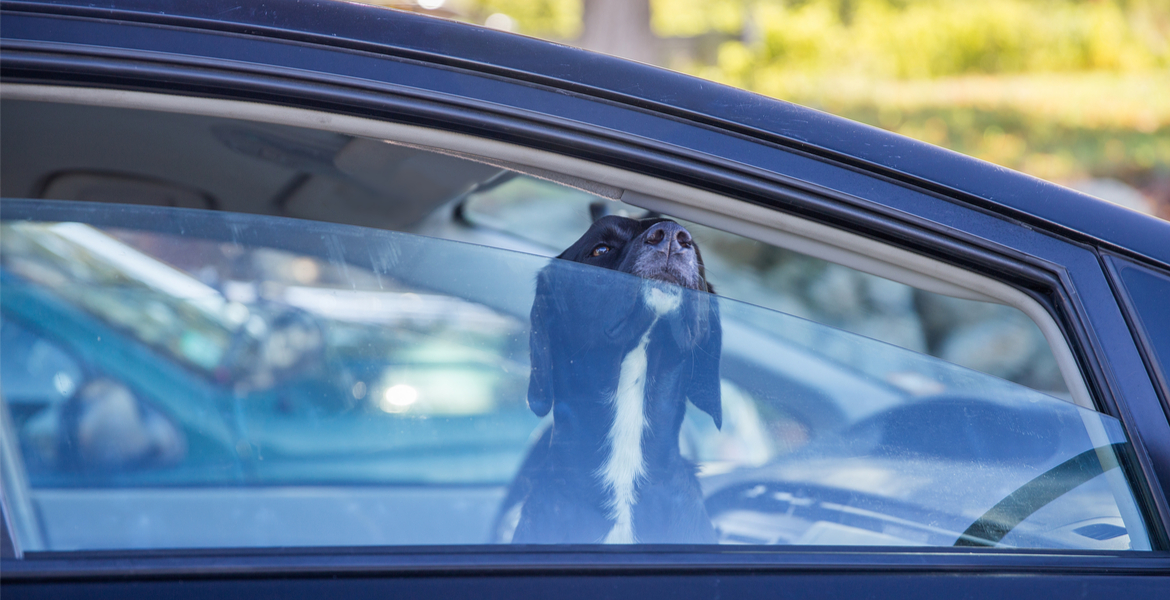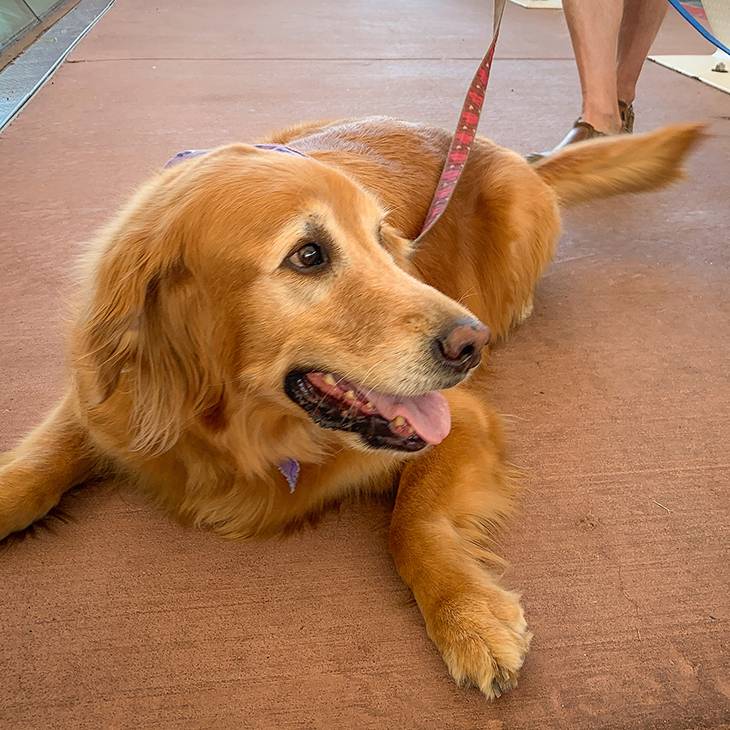
Keeping pets safe in the summer heat
Monday, June 15, 2020
Clear blue skies and summer sun means many Oklahomans will be spending time outdoors. Some pet owners enjoy bringing their furry friends along on summer activities.
Although many animals like spending time outside, pet owners need to take precautions to ensure they stay safe in the summer heat, said Dr. Rosslyn Biggs, Oklahoma State University Extension veterinarian and director of continuing education for the university’s College of Veterinary Medicine.
“Humans take precautions such as staying hydrated and applying sunscreen when spending time outdoors in the heat. It’s just as important to take heat-related precautions for your pet,” Biggs said. “Dog’s don’t sweat like people – instead they pant to cool themselves. Excessive panting indicates your pet is overheated. As the heat increases, body functions begin to shut down.”
As for car rides, leaving a pet in a hot vehicle is a life-threatening mistake. Biggs said cars’ interiors heat up quickly, even if the air temperature is only 80 degrees. The interior of a vehicle can reach 115 degrees in just 15 minutes.
“When dogs pant to cool themselves, inhaling hot air from inside a vehicle has little cooling effect and the animal can quickly overheat in just a few minutes,” she said. “As much as you enjoy your pet’s company, and as much as they enjoy rides in the car, it’s best to leave your furry friend at home on hot days.”
For those who enjoy a good run with a canine friend, Biggs said to keep in mind asphalt roads and walking trails can be too hot and burn the pads on a dog’s feet. Before heading out, place your hand or bare foot on the running surface. If the surface is uncomfortable to human touch, it also is too hot for a dog. She suggested going for a short run or walk early in the day or later in the evening when the temperature is more bearable.

For those who enjoy lake trips, do not assume a pet dog will drink lake water. Be sure to always bring a bowl and a supply of fresh water to keep the dog hydrated.
The same is true at home. Sun coming through a window can heat up a water bowl, and most dogs will not drink hot water no matter how thirsty they are.
Biggs said for pets who stay outside during the day, make sure the water bowl is in a place that’s shaded and cannot be tipped over. If possible, give your dog fresh, clean water several times throughout the day.
“Freeze containers of water to put in your pet’s outdoor water bowl,” she said. “This will help ensure your furry friend’s water stays cooler for a longer period of time.”
Access to shade in the yard is an absolute must for pets. A small kiddie pool is a great way to provide a fun cooling-off spot where Rover can play.
Despite all precautions, a pet may still show signs of heat stress or heat stroke. Signs of heat stroke include heavy panting that does not resolve as the pet rests, increasing distress, a tongue color that is dark red to almost purple, weakness or collapse, hyper-salivation, vomiting and labored breathing.
Dogs’ gums often appear redder early on when an animal is overheated and become paler when excessively overheated. In addition, a dog’s gums may be dry or sticky if the animal is not staying adequately hydrated.
“If you suspect a dog or cat is suffering from heat stroke, move him to a cooler environment immediately and apply cool water to the abdomen, ears and foot pads. Don’t pour ice water over the whole animal, submerge your pet in a tub of cold water, or cover it in a cold, wet blanket, as these all may result in cooling your animal too quickly and decreasing blood flow to important areas,” Biggs said.
Once stable, get the animal to a veterinarian as quickly as possible, even if the pet seems to be cooling down and the body temperature seems normal. Biggs said heat can cause internal damage that’s not immediately obvious.
“As a pet owner, it’s vital to establish a good relationship with a local veterinarian, not only for emergency situations, but also for regular checkups,” she said. “If you travel with your pets, get veterinarian recommendations for the area to which you’re traveling in the event your pet gets sick.”
Keeping a dog well-groomed is another way to reduce the risk of heat stress and help keep the animal more comfortable in the summer heat. A natural coat that has been groomed offers protection from sunburn and acts as cooling insulation. Shaving your dog’s coat will take away that protection.
“Remember, your pet can’t tell you in words when something is wrong. As responsible pet owners, it’s your job to protect and provide for your pet,” Biggs said. “If you’re feeling uncomfortably warm, it’s a sure bet your dog is, too.”
MEDIA CONTACT: Trisha Gedon | Agricultural Communications Services | 405-744-3625 | trisha.gedon@okstate.edu
